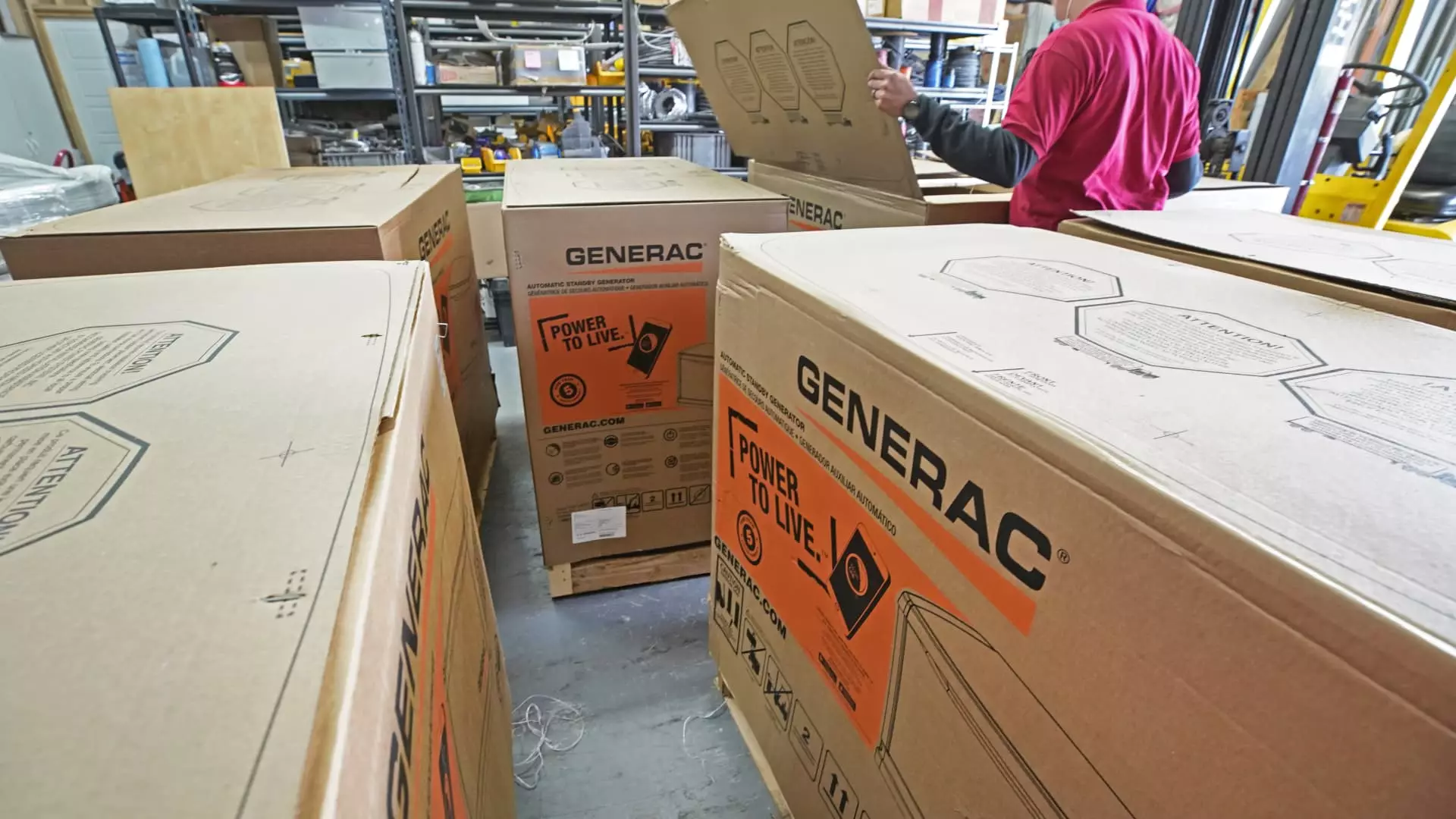This summer, as blistering heat waves bake the central and eastern United States, public attention shifts dramatically towards backup power solutions. Investors are capitalizing on this urgent need, fueling a remarkable upswing in Generac’s stock, which has experienced its most significant gains in nearly two years. The statistics speak volumes; the company’s shares surged almost 12% in just one week alone, securing a path towards its sixth consecutive day of growth. This moment is more than just another fluctuation in the stock market; it is reflective of the broader implications of climate change and the urgent necessity for reliable energy backup.
When temperatures soar and power outages become a reality, the trust in established utility companies wavers, leading consumers to seek alternatives. Generac is no longer just a company selling generators; it has become a crucial lifeline amidst increasing instability in power supply. As climate change continues to wreak havoc—exemplified by the incessant heat and potential for hurricanes—the value of such products will only become more pronounced.
The Threat of Hurricanes and Climate Variability
The current Atlantic hurricane season is predicted to be above normal, a concerning forecast given that the National Oceanic and Atmospheric Administration anticipates 13 to 19 named storms, with several expected to reach hurricane status. While storms like tropical storm Andrea may fizzle into mere rain showers, they serve as a stark warning of what’s to come. Each storm has the potential to overwhelm an already strained power grid, which is burdened not only by existing demand but also by a series of new power-hungry data centers that continue to proliferate.
This isn’t merely speculation; research indicates that the risk of power outages could escalate by over 50% in some regions. Climate change isn’t just an abstract issue but a direct threat to our infrastructure. When the margins for error are razor-thin, the consequences of inaction become unavoidably clear. Generac’s CEO, Aaron Jagdfeld, encapsulated this urgency when he remarked that the growing prevalence of severe weather is “only going to get worse.” As these conversations gain momentum, it’s imperative we consider the implications this has for our energy policies.
The Emerging Energy Landscape
Banks are already forecasting an uptick in electrical demand, estimating a compound annual growth rate of 2.5% from 2024 through 2035. In this evolving landscape, the market dynamics are shifting, benefiting not only backup power companies like Generac but also those manufacturing equipment essential for cooling systems, like Trane Technologies. This demand creates a ripple effect throughout the industry, setting the stage for potential accelerated growth.
Utility stocks, traditionally seen as stable, are also positioned to profit from increased energy consumption. Analysts predict “significant” tailwinds in the second half of the year, buoyed by data center deals that are likely to enhance margins for companies such as Constellation Energy and Vistra. While such optimism is warranted, it is crucial to remain discerning. With utility stocks already outperforming the broader S&P 500, the time has come for investors to adopt a strategic approach, focusing on those stocks that may still present untapped potential.
Investment Opportunities in a Changing Market
As we navigate this complex new reality, investors should consider the opportunities present within the utilities sector. While some firms have thrived, others remain buried in the shadows, waiting for the right catalysts to drive their growth. Sempra and Alliant Energy are just two examples of laggards that present enticing opportunities.
The current climate has forced a critical reevaluation of energy solutions and their long-term viability. Companies that can adapt and offer reliable products in times of crisis will not only survive but thrive. Generac stands to reap the benefits, thanks in no small part to its forward-thinking strategies. Investors focusing on stocks that lie in the intersection of climate preparedness and technological adoption will likely see substantial returns in the coming years.
As we press forward into what promises to be a transformative era in energy consumption, it’s vital to remain focused on emerging trends and adaptable solutions rather than resting on outdated paradigms.


Leave a Reply